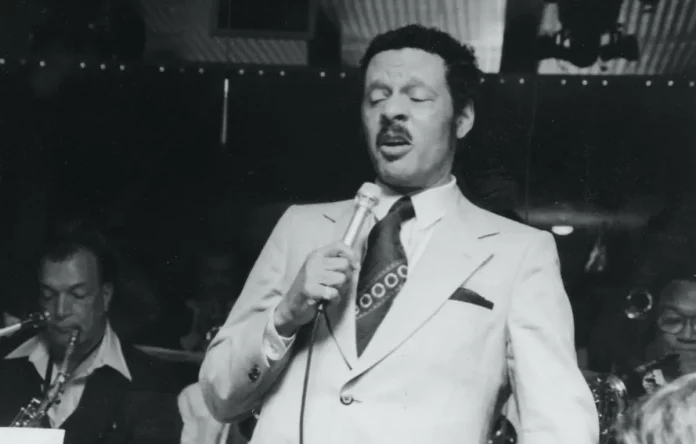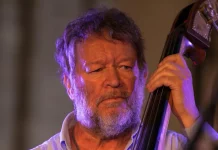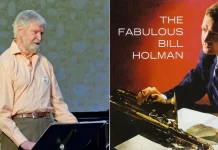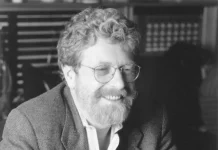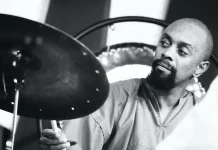Ernest Mitchell Andrews Jr was born 25 December 1927, Philadelphia, Pennsylvania, and raised in Louisiana but while still a teenager his family moved to Los Angeles where he attended Jefferson High School.
The post-war Central Avenue scene was a magnet for a young singer eager to develop his talent for jazz, R&B and especially ballads. There, he sang on a talent show, which attracted the attention of songwriter Joe Greene and resulted in his first recording date on which he sang Soothe Me. His connection with Greene resulted also in a song being written at his urging; this was Don’t Let The Sun Catch You Cryin’.
In the 1950s he recorded for GNP – In The Dark, Ernie Andrews and Travelin’ Light – and with Benny Carter and Cannonball Adderley among many leading figures. Unfortunately, like many artists, especially the young and unworldly, Andrews fell foul of contractual problems that had severe financial problems. Much better fortune came at the end of the decade when he was heard by film star Betty Grable who encouraged her husband, Harry James, to hire the young singer.
Andrews toured with the James band for more than five years, although these were not good times for a black singer appearing with a white band. In a Los Angeles Times interview in 2014, Andrews observed: “Harry stood behind me during racism. A lot of hotels would want to put me in a different hotel, and he wouldn’t allow that.”
Like so many of his contemporaries, through the 1960s and 1970s Andrews suffered from the public’s demand for rock ’n’ roll, but he continued performing, mainly in West Coast clubs. He also made records, among them 1965’s Soul Proprietor (Dot), 1979’s Hear Me Now (Muse) and in 1976 he also recorded with the Frank Capp-Nat Pierce big band, Juggernaut (Concord). Although he did make some overseas tours, he was nowhere nearly as well known internationally as his considerable talent deserved.
Andrews continued to sing throughout succeeding decades and his recordings from this period show that he had lost none of his skill, verve and enthusiasm. These albums include From The Heart (Discovery 1980), The Great City (Muse 1990) and several for HighNote: The Many Faces Of Ernie Andrews (1999), Girl Talk (2001), Jump For Joy (2003), How About Me (2006).
In 1980, I heard him live with the Capp-Pierce Juggernaut at a dinner-dance held in a huge, echoing space at a Hollywood film studio. Singing to an audience interested only in non-musical matters, he performed with flair and matchless enthusiasm, as did the band, and the occasion remains a treasured memory.
From his earliest days, Andrews had a great affection for ballads, his warm, smooth and wide-ranging vocal sound having an underlying toughness. In addition to ballads, jazz and R&B, he was also a convincing singer of the blues and he combined these attributes to ensure that his work was always interestingly different.
Retired for more than a decade, Ernie Andrews fell, broke a hip and was taken to a hospital in Conroe, Texas, where he died 21 February 2022. His wife of 52 years, Dolores Loretta Benemie, died in 1997. He is survived by a daughter, Stephanie Andrews Williams; by sons Dueal Ernie Andrews, Dana Andrews and Mark Andrews; by 12 grandchildren, 22 great-grandchildren and seven great-great-grandchildren.
The life and career of Ernie Andrews is best summarised in his own words. In Lois Shelton’s 1986 documentary, Ernie Andrews: Blues For Central Avenue, he remarked: “All I’ve ever known in life is singing. I just sing and sing and sing and sing.”

